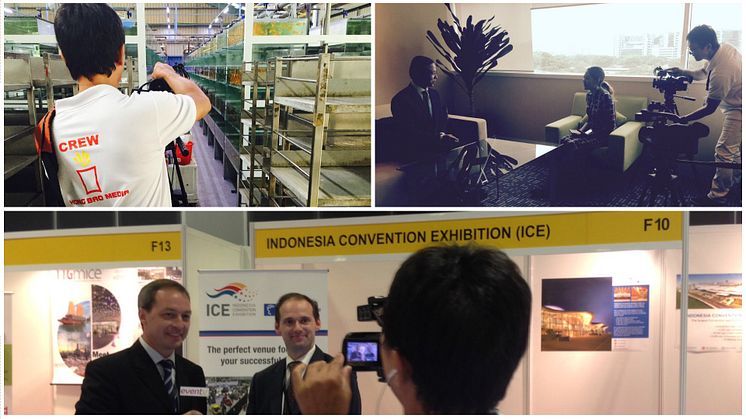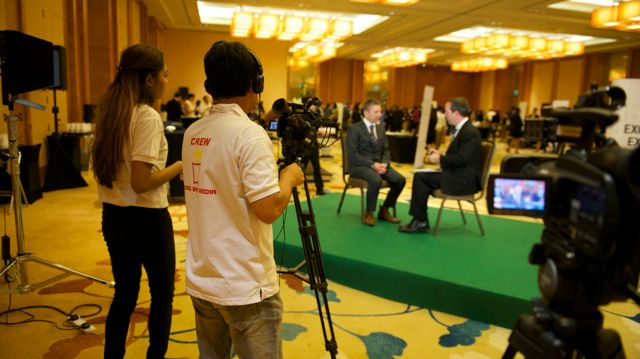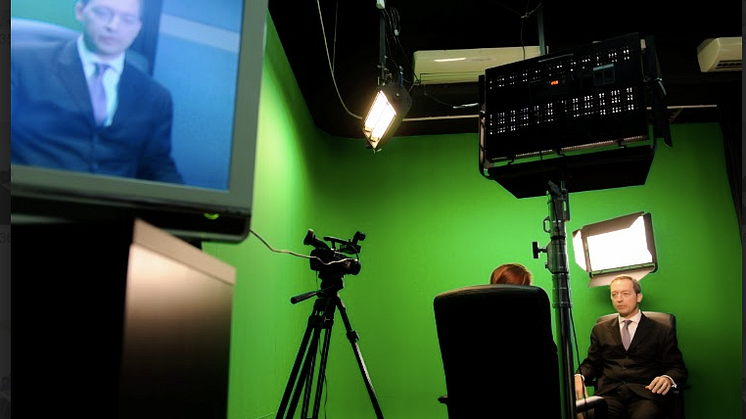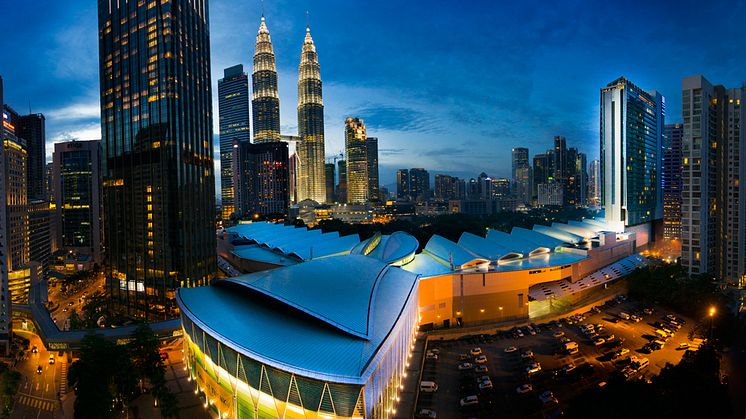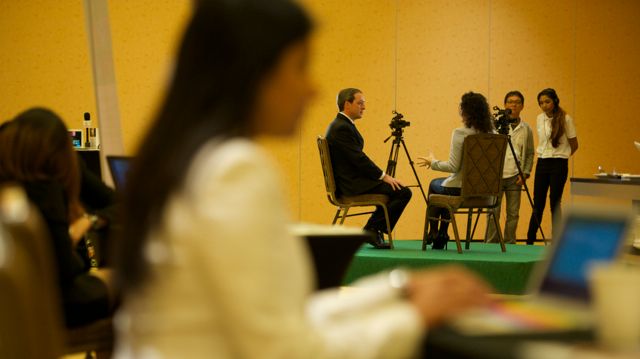
Blog post -
6 tips to make your event a success
Attend any trade show and you will likely see exhibition space that's completely wasted. While the major sponsors usually go all out with large, elaborately carpentered displays, there are others – usually on the fringes – where exhibitors have barely made an effort. You will see a poorly-designed standee, or a single poster blue-tacked to the walls of the booth; a few brochures might be laid out on a small table that's part of the basic package provided by the event manager; and all too often, there is someone seated behind this table – a student or a temp staff – who spends the entire expo staring at their smart phone in the hope that no one will stop by to ask them any questions about the product or service being showcased.
Folks, let's get with it. Even if you were allocated exhibition space as part of a barter arrangement, and you didn't really want it, that's no excuse to leave it empty, or sparse. That just makes your brand look bad.
But it's also bad for the event. Conference organisers work hard to get delegates through the doors, especially for long-running events where every year delegates expect to see fresh concepts, and an ever more exciting program. If exhibitors don't make their spaces worth visiting, the chance of delegates returning next year will be reduced.
Here are the top 6 things you need to do to maximise the impact of your exhibition space:
1.Show and tell – whether you are selling a product, a service, or your expertise: demonstrate it! Show visitors to your exhibition space how your product or service works. Sometimes that's not possible, such as if your product is too big, too noisy, or if your service can't be brought indoors. But at the very least, have it physically on display. Talk about it. Or schedule a talk about yourself, if your expertise is the product. That's especially the case if you have a speaking slot in the trade show's plenary program. Arrange for "meet-and-greet" time at your booth later that same day (and be sure to be there for it). But please: don't just put up a standee and lay out some brochures.
2.Bring your experts along – all too often, sponsors pay substantial sums of money for exhibition space, only to staff them with volunteers, students and temps who know next to nothing about the product or service. They answer every query with, “I don’t know, I’ll have to ask”. Your participation at an exhibition must be a whole-company affair. Your best people must be out there talking to prospective customers, not stay in their R&D lab or office. And I don’t mean your best sales people. If you want to showcase how much better you are than your competitors, bring the ones who truly create the value in your product and get them to engage with prospective customers. Roster them to come at different times, if you need to.
3.Stand forward – worse than hiring temps and students, frequently the staff at exhibition spaces hide behind the counter. Unless you have a seating area in your space where you can invite interested delegates for a further conversation, there is no reason for anyone to stand behind the counter. All your staff should be forward, in front of the counter, ready to engage delegates in conversation. That said…
4.Make delegates come to you – another phenomenon you can observe at trade shows is the army of clipboard-holding sales people in company-branded polo T-shirts who try to snare passers-by and talk them into signing up for something. Notice how the passing delegates avoid eye-contact, weave around them and just want to get away. Not exactly a great start to a new business relationship. Offer something of value at your exhibition space to make delegates come to you (and I don't mean a free trial of your service, because everyone knows nothing is free, and you're just trying to build your database of leads). Instead, create a good, solid reason for delegates to come to the event, and to stop by your exhibition space. Demonstrate your subject matter expertise. Schedule a product launch or an announcement. Invite a special guest from your industry to an at-booth interview. Do something to encourage delegates to come to you. Turn your space into an event.
5.Promote your space on social media – tweet photos of your exhibition space and report on LinkedIn, Twitter or Facebook what you're up to. In other words, take your exhibition space beyond the four walls of the exhibition hall. Don't leave it up to the event manager to drive attendance, leverage your own network to get people to come. Even if they don't, at least your customers will see that you are proactive.
6.Capture the event – the value of your investment in the exhibition space the day after the expo closes is, precisely, zero. Sure, you might have gathered new leads while the event was on, but your ability to leverage your investment in your exhibition space evaporates at approximately 6pm on the last day of the expo. For this reason, take photos and videos of yourself at your booth – what we call eventv.
There are many advantages of video at events:
1.At-event content generation – capture all that value that is delivered at events. Videos allow you to:
a.Demonstrate your product/service – even if you can't, because your product is too big or it is not possible to provide a demo for some other reason.
b.Explain your product/service – even if you're busy attending to someone else at your both, a video will hold people's attention and educate (and hopefully entertain) them while they're waiting.
c.Leverage your investment – your exhibition space lives on, long after it's torn down and everyone's gone home.
2.Pre-event teasers – drive attendance by showing them what they will see. Link to these videos in your pre-event email blasts, on your website, and even at your exhibition space.
3.A creative alternative to sales videos, which – let’s be frank – nobody watches.
4.Professional presenters who know how to put the interviewee at ease and ask the right questions.
5.YouTube is not the only channel for video distribution. Achieve targeted distribution for your content to attract more business.
6.Multiple uses for your videos – you can post it on your website, share it on social media, use it as a short summary to attract sponsors and exhibitors for the next event.

